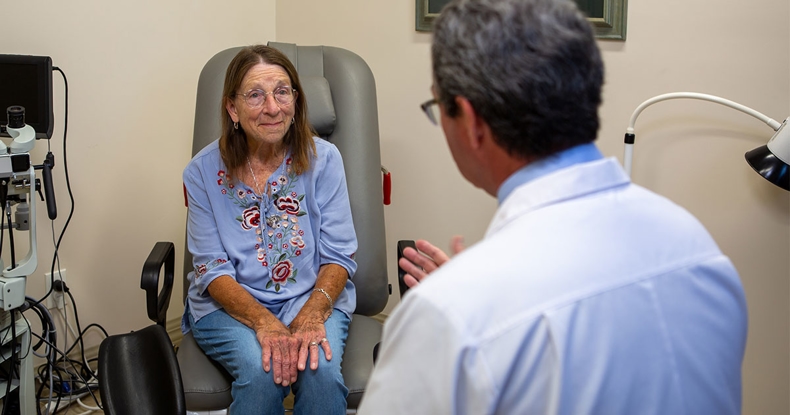We prioritize your well-being and health at Lompoc Health – North Third Center. Our expert Urogynecologist, Dr. Eugene Kaplan, is dedicated to diagnosing and treating pelvic floor disorders. These disorders encompass conditions such as urinary and bowel incontinence, pelvic organ prolapse, and related symptoms.
The pelvic floor is a complex network of muscles, ligaments, connective tissues, and nerves that support essential organs such as the bladder, uterus, vagina, rectum, and bowels. Drawing from his rich experiences in Northern California, Philadelphia, and as a co-founder of the Women’s Continence and Pelvic Medicine Center at California Pacific Medical Center, Dr. Kaplan is experienced in managing these disorders while providing compassionate care.
Pelvic floor disorders arise from weakened pelvic muscles or connective tissue damage, leading to complications with bladder or bowel control and pelvic organ prolapse. Symptoms include frequent urination, pelvic pressure, discomfort during sex, urinary leakage, bowel incontinence, and recurrent Urinary Tract Infections (UTIs). If you’re experiencing any of these, our Urogynecologist can help.
Approximately 25% of women, ranging from young adults to seniors, experience pelvic floor disorders at some point in their life. We strive to reduce these disorders' medical, social, physical, and psychological impacts through our comprehensive, multidisciplinary treatment program.
Factors that may increase the risk of pelvic floor disorders include vaginal or C-section births, multiple births, obesity, strenuous activity or heavy lifting, aging, genetic predisposition, previous pelvic floor surgery, and chronic constipation. Pelvic floor disorders can affect women of all ages.
Urinary Incontinence is the involuntary loss of urine. Incontinence can be embarrassing and may interfere with life’s routines. The most common types of incontinence are Stress, Urge, and Mixed. Overflow incontinence that occurs less frequently.
If you have a trouble controlling our bladder you are not alone. Loss of bladder control is shared by millions of people worldwide. Incontinence affects people’s everyday life, reducing their physical and social activities. Many women also decrease their intimate relations due to urine loss during sexual activity. Help is available.
This is the most common type, affecting 30 to 75 percent of incontinent women. In stress urinary incontinence (SUI), the urethra may be abnormal from either of two basic problems. First, the urethra may be poorly supported. The urethra should have strong support from ligaments, tendons, and muscles so that it remains in the proper position during exercise, coughing, and straining. These structures can be injured or weakened by childbirth, pelvic surgery, obesity, frequent prolonged straining and strenuous exercise such as weightlifting, long distance running, high impact aerobics, for example. It is frequently associated with loss of support for the other pelvic organs, particularly the bladder. There may also be prolapse of the uterus, rectum or small intestines. This condition is sometimes referred to as “dropped bladder” and the operations to correct it are often generically referred to as “bladder lifts.”
The second cause of SUI is poor urethral function, or intrinsic sphincter deficiency. (ISD) Stress incontinence can occur when the urethra is in a perfectly normal and well-supported position or in combination with lack of support. This is a common condition that may be associated with aging or previous surgeries. Patients with stress incontinence will report leakage with coughing, sneezing, laughing, and lifting heavy objects, bending over, and other physical activities such as playing tennis. The leakage tends to be drops or small amounts of urine that spurt out quickly.
This condition is associated with abnormal, undesired and uncontrollable bladder contractions. This abnormal contraction pushes urine out through the urethra and causes leakage because urethra is unable to stay closed (the bladder should not contract until a person is at the toilet ready to urinate). In this situation the abnormality is in the bladder muscle itself and therefore it contracts inappropriately. It affects up to 33 percent of incontinent women, with the incidence increasing with advancing age. You may have stress and urge incontinence and the term is known as mixed incontinence.
Overflow incontinence is urine loss associated with over-distension of the bladder due to poor evacuatory function of the bladder. It may be caused by an hypoactive bladder and or by bladder outlet or urethral obstruction, frequently due bladder support.
Treatment starts with an accurate diagnosis. Evaluation starts with the detailing of a meticulous medical history followed by a thorough urogynecologic/pelvic exam. Additional tests may include urine analysis, culture and urine cytology. Some patients may require urodynamic testing and/or cystoscopy to understand the problem better and offer you most appropriate treatment plan.
These may include diet changes, fluids management, behavioral modifications, pelvic floor muscles exercises and other physical therapies to help you to control urine. Certain medications and/or surgery may be beneficial for some patients depending on their specific situation. Incontinence can be controlled, and in many cases, cured.
We provide the following glossary of urogynecological terms to help you better understand your condition and treatment options.

Imagine facing health challenges for years and finally discovering a solution that transforms your life. Alanna ...
Continue Reading
What Lompoc Health patient Dawn Smith appreciated the most about her appointments with Dr. Eugene Kaplan was his ...
Continue Reading
When I was waiting for my name to be called for my normal six-month appointment at Lompoc Valley Medical Center, I ...
Continue Reading